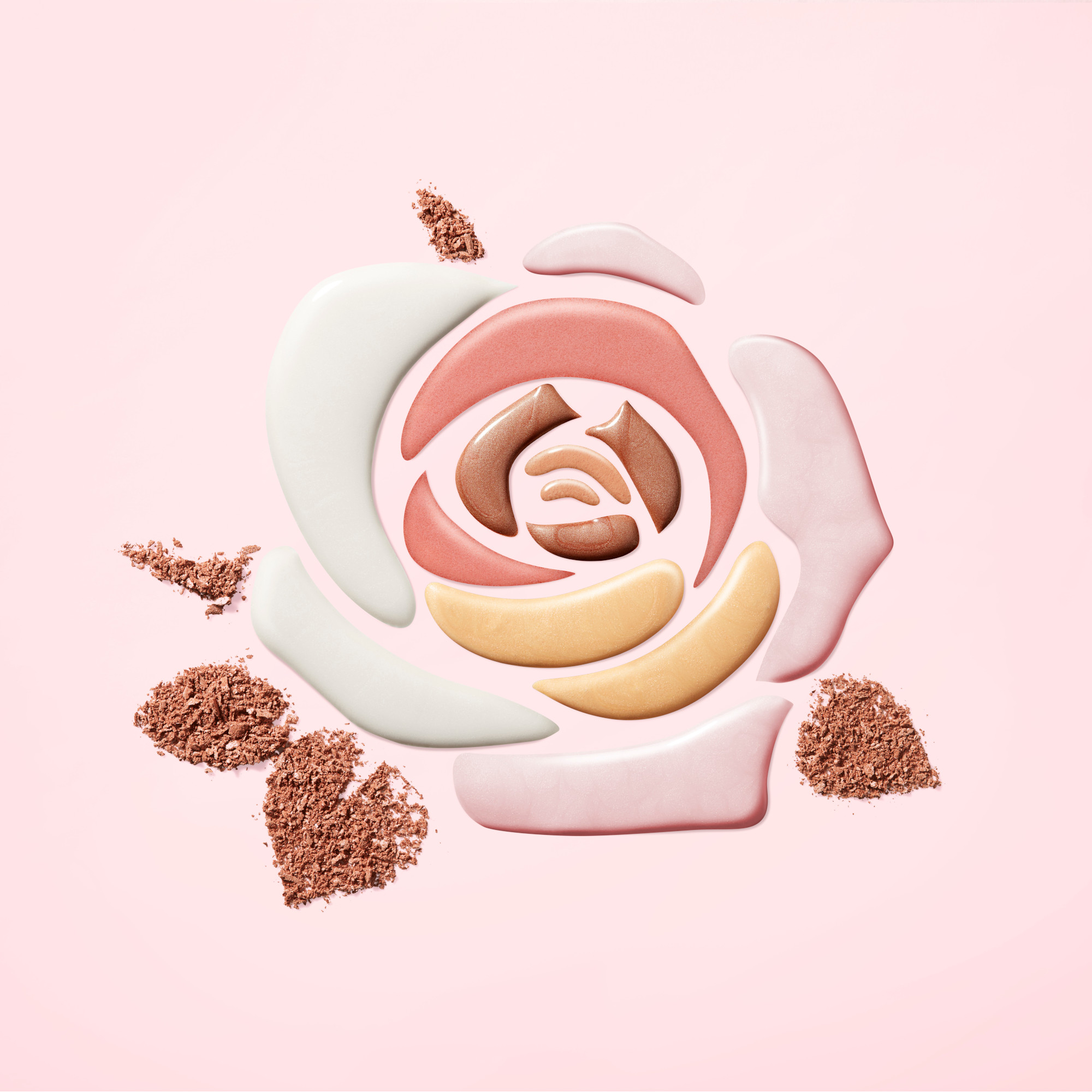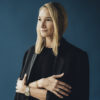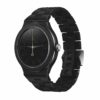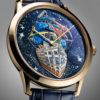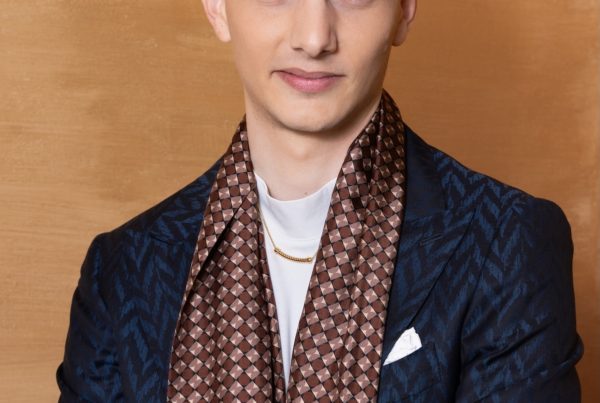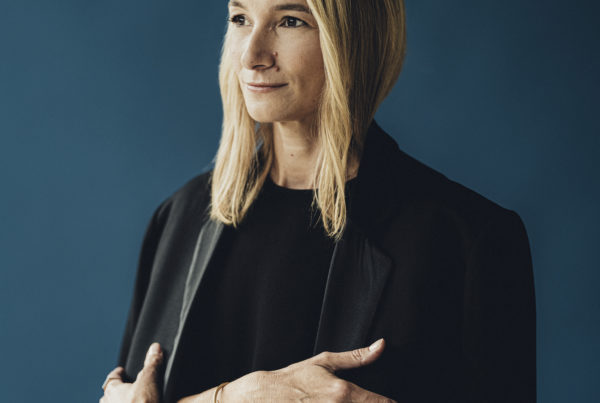« Beauty is an inner and outer state of being »
Terry de Gunzburg launched her make-up and skincare brand By Terry 25 years ago after creating the cosmetics line for fashion designer Yves Saint Laurent. For him, she invented one of the beauty industry’s best sellers: the famous Touche Eclat highlighter. Along with her husband, she is also a major art collector. We take a look back at her extraordinary career. Isabelle Cerboneschi

Terry de Gunzburg is a legend in the world of beauty. After creating all the make-up collections for Yves Saint Laurent, she launched her own brand, By Terry, 25 years ago. It feels like yesterday,” she says.
So we talked about yesterday and also the day before, when she was head of the beauty department at Yves Saint Laurent. She met the designer in 1985. One wonders whether an invisible link brought them together: Terry de Gunzburg’s family was forced to leave Egypt in 1956 (she was a year old), when Gamal Abdel Nasser became president and expelled the French and British, while Yves Saint Laurent’s family was forced to leave Algeria when he was a teenager. Did this parallel exile allow them to create a very Parisian fashion and beauty line with an oriental spirit in the background? It’s conceivable.
For 15 years, Terry de Gunzburg was the interpreter of the couturier’s collections and created beauty items that are still best sellers today. The famous Touche Eclat, which she created in 1992, a brush with a reservoir containing a complexion illuminator, has been a woman’s best friend for thirty years: it erases dark circles and illuminates the face. One is sold worldwide every ten seconds.

It’s an extremely precious thing to be able to talk to a woman who has witnessed the evolution of fashion and beauty over several decades. The first time we met, she was still working for YSL. The second was in 1998, in the private salons of her Véro-Dodat gallery in Paris, just after the launch of her own brand By Terry.
As well as beauty, Terry de Gunzburg is an art lover. With her husband, Jean de Gunzburg, she has one of the finest collections in the world. Some of the pieces in their possession, including works by Pablo Picasso, Georg Baselitz, Mark Rothko, Chaïm Soutine, Francis Bacon and Alberto Giacometti, would easily find their way into a museum. We talked about beauty, and art too, during a conversation in which time seemed to have shrunk like a cashmere jumper washed at 80 degrees.
INTERVIEW
After dropping out of medical school, you spent 10 years with the Carita sisters, two great ladies of beauty. What was the greatest lesson they taught you?
Terry de Gunzburg : After my first four weeks, when Maria Carita sent me to do make-up for Vogue magazine, I said to her: “I’m never going to know how to do that! She replied in her Toulouse accent: “How do you know you won’t be able to do it until you try?” That phrase opened every door for me: you always have to try! So I became an “INGU”, as my husband calls me. It means: “I Never Give Up”.
In 1985 you met Yves Saint Laurent. Did he give you the themes of his collections so that you could interpret them in make-up?
No, he never gave me a theme because he was locked into his creation, into his art. And it worked because the people around him who were in charge of the different departments, like me for beauty or Loulou de la Falaise for accessories and jewellery, knew how to reinterpret the spirit not only of Yves Saint Laurent but also of his collections. I had the privilege of being welcomed to Monsieur Saint Laurent’s studio in advance, so I could soak up every detail. To go and see him, there was a ritual to be observed: we couldn’t appear before him without having clean hair, red lipstick and high heels. I remember a make-up collection called Graphisme that I created in the 1990s, entirely in black and white. I reinterpreted Yves Saint Laurent’s dinner jacket and white blouse: the feminine yet androgynous side of his fashion. It was so modern! By the way, my black wasn’t basic: I called it Expresso because it was an almost black brown for the lips.
What did you learn from Yves Saint Laurent?
That there are no limits and that style is more important than fashion. I also learned the science of colour from him. His beiges were alive, three-dimensional, and if you added a hint of pink or pale blue, it changed the tone completely. I discovered that when you clash totally opposite shades, if they’re not right, it can lead to disaster. With him, anything was possible, as long as there was balance.
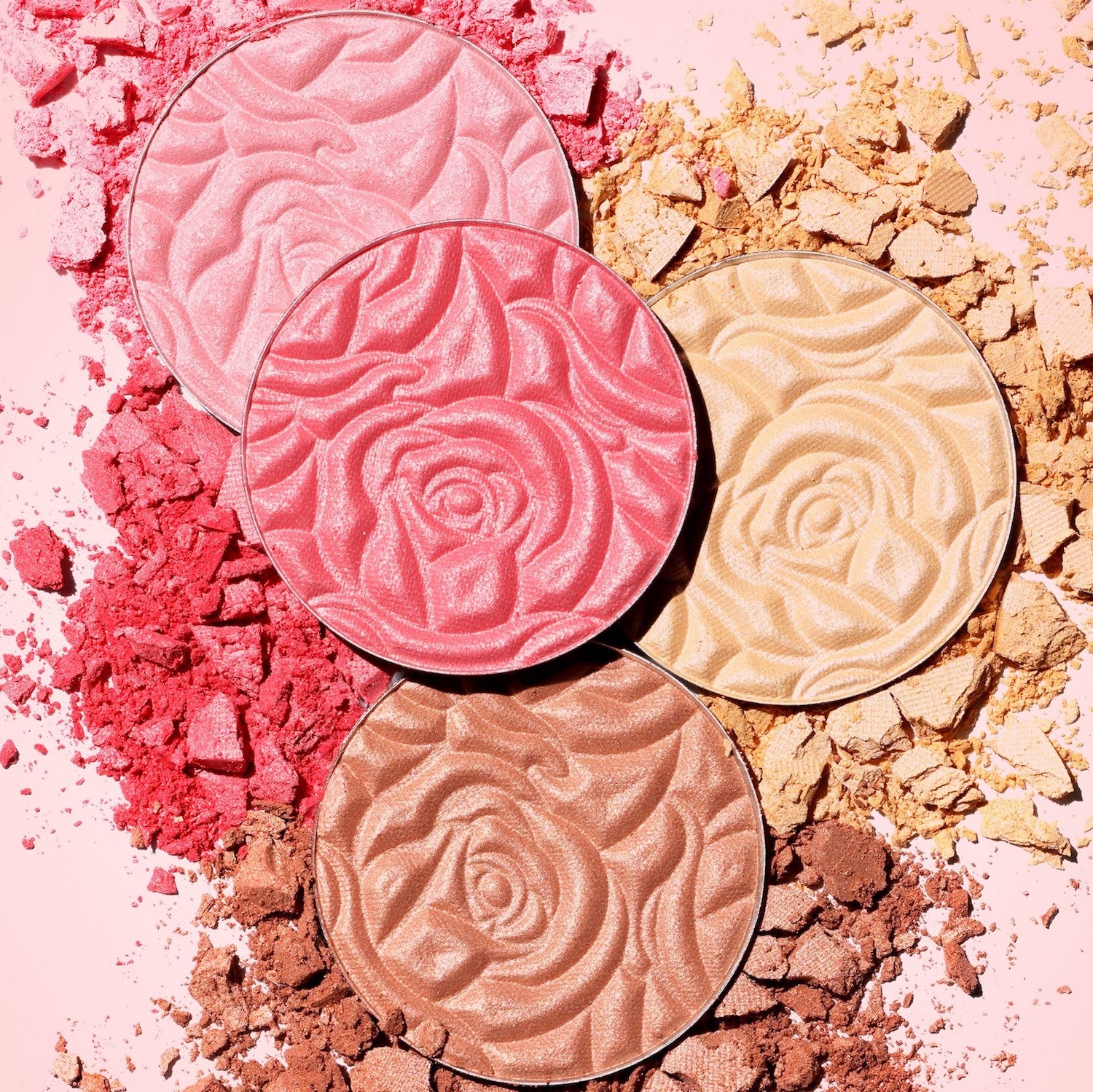
What’s the difference between the art of make-up then and now?
Paradoxically, they tend to have a lot in common, in particular the injunctions. There used to be the diktats of seasonal looks in the past. Every woman would run out and buy the look of the season and apply it to her face, whether it suited her or not. Over the decades, we saw the emergence of the nude and no-colour fashions, the very red lips, the smoky eyes, which were followed by all women. Today, with the omnipresence of social networks and all those contouring videos, young women are imposing new diktats on themselves. They interpret nude in an extremely sophisticated way, with lots of make-up but only in beige tones, sun-kissed shades and browns. As a result, I was very pleased to discover that the intense blue pencil (Crayon Blackstar 5 Terrybleu, editor’s note), which I launched in the spring and which I had originally created for an Yves Saint Laurent collection, was immediately ‘sold out’. In the fashion world, there’s the phenomenon of the ‘it bag’, and in the case of my pencil, you could call it an ‘it pencil’. Blue is a magical, masterful colour that gives you a boost. We need to give our everyday lives a boost. Blue beautifies all women. It’s pretty and it’s not a caricature: it’s not as if I’d created a yellow pencil for the eyes and a yellow mascara for the lashes. It surprises, but in a good way. And right now, we need surprises.
In 1992, you invented the magic wand of make-up for YSL: the famous Touche Eclat. How did you come up with this idea?
I’ve always made up faces with brushes, whether for the eyes or the complexion. But forty years ago, that was anachronistic. I had a secret for retouching the make-up of girls who posed for hours on end. Photoshop didn’t exist back then. We had to powder the faces to mattify the complexions and prevent the faces from shining in the photo. My secret? I mixed a drop of very light foundation, a drop of toner and another of moisturiser. I applied the result with a brush around the mouth, above the eyes and in the middle of the forehead. It blended in with the foundation and gave the face an instant glow, without having to remove all the make-up. The photographers were delighted, because it saved them time. The models were overjoyed because their skin was flawless and not irritated, and that made a real difference on film. That’s what gave me the idea for Touche Eclat. I’ve interpreted it for my own brand. This spring, I launched a new apricot-coloured complexion illuminator. It looks iridescent, but when you apply it, it’s as if you’re dropping millions of micro-bulbs of light onto your face, which fade into the skin. I work for women and if something is good for me, I know it will be good for them.
I tested your hyaluronic hydra-powder and the result surprised me: I hate powder but this one makes the skin soft and unlike the others, it doesn’t nestle in fine lines and wrinkles. What’s the secret?
It’s an incredible product because it’s not a powder! It’s a powdered skin care product that’s packed with hyaluronic acid, which has a moisturising effect: the molecules are quite large and remain on the surface. This gives an “airbag” effect. When you apply this powder to matify your complexion, you also put a sort of dry moisturising patch on your skin. This creates a veil of hydration. The powder has a “filler” effect. It’s a real innovation. This product is for all those, like me, who hate powder. It can also be applied at night over skincare products, as it seals in all the active ingredients while moisturising the skin, a bit like a mask.

Outside the world of beauty, you are an art collector and you own works by artists who have left their mark on the history of art. I’m thinking of Bacon in particular, whose signature style is the distortion of faces and bodies. Is it fair to say that you are on opposite ends of the spectrum?
Not at all, because I’m not an artist, I’m an art lover. My husband and I were lucky enough to acquire some masterpieces very early on, but I don’t compare myself to the artists I live with. And certainly not with Bacon. He has a very prolific, tortured side. I can sometimes go through very tortured moments, when I question myself completely, but very quickly I bounce back and rise from my ashes. Where I could eventually join Bacon, in all humility, is in his sense of colour: he’s a colourist of genius. His orange and mauve backgrounds are extraordinary. As for the deformation of his faces, it’s all done with a precision of identity that I find fabulous.
How does art help you to create? To live?
Art helps me to live. It’s a way of breathing, a spiritual, intellectual and emotional nourishment. I don’t know why I’m so taken aback every time I go into a museum to see an exhibition or simply a painting. I come out reanimated. Art is an indispensable source of inspiration. I think I could live without a lot of things, but not without art.

You were born in Egypt and have French, Lebanese, Syrian, English and Italian origins. Has this multicultural background influenced your destiny?
Of course it has! I was born in Egypt quite by chance. My grandparents lived there when the Suez Canal was still Franco-British. My grandmother was English, born in Syria under the British protectorate, my parents were from Cairo, my paternal grandmother was Italian. In 1956, all the French and English were expelled. I was born in a very cosmopolitan Middle East, having been brought up in a Franco-English culture. My grandmother and mother were extremely wealthy female princesses who lost everything overnight. They taught me that resilience is essential. My grandmother always told me: “Keep your good humour, your smile, your intelligence and your curiosity: they’re the only things that no one can take away from you”. And it’s true! There is a culture of beauty in the Middle East. Like the women in my family who protected themselves from the sun, I never expose myself. It was a cultural thing. My grandparents had rose and orange blossom gardens and my grandmother made her own concoctions in stills at home. We always washed our skin with rose water. We’ve always had this notion of oriental femininity and, I hope, generosity of heart.
What is beauty?
Beauty is an emotional feeling and when we talk about plastic beauty, it’s an extremely relative notion. It has to be personal and about identity, but not obsessive. I abhor this systematic quest for universal beauty. Beauty is an inner and outer state of being, and so much the better if the two come together.

